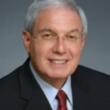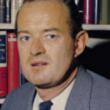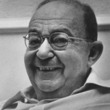The Secret Service: the hidden history of an enigmatic agency
Description
More Details
Table of Contents
From the Book - Second Carroll & Graf edition.
Similar Titles From NoveList
Similar Authors From NoveList
Published Reviews
Booklist Review
Initially created to combat counterfeiters of U.S. currency, the Secret Service is far better known for protecting presidents. This latter task, as Melanson and Stevens note in their informative history of the organization, was not technically legal until 1951, when Congress authorized it following the foiled assassination attempt on Harry Truman the previous year. The expansion of the Secret Service since then, combined with the increase in threats and actual attacks on presidents and presidential candidates, supplies the book's grist. In search of lapses by the Secret Service, the authors make reasonable critiques of poor protection of John Kennedy and then proceed to score the service for its failure to protect George Wallace in 1972 and Ronald Reagan in 1981. They then turn to the topic of safeguarding the White House and to the recruitment and training of agents, and maintain a balanced tone in discussing the personal relations between agents and their presidents. Occasionally speculative, the authors generally seem fair-minded, earning their work a solid recommendation for the law-enforcement shelf. --Gilbert Taylor
Publisher's Weekly Review
This comprehensive, sometimes critical and often dry history explains how the Secret Service grew out of the Treasury Department in 1865, with the original mission of protecting American currency against counterfeiters. Melanson, an expert on political violence and government secrecy, and Stevens (The Voyage of the Catalpa) show how, late in the century, the Service gradually (and initially without congressional authorization) expanded its mission into presidential protection. Opponents of the expansion thought assigning a guard to the president would give him the trappings of monarchy, making him less accessible to the people. The most compelling chapter examines the failure that continues to haunt the agency: the 1963 assassination of President Kennedy. The authors analyze what went wrong in Dallas: Kennedy's limo driver reacted too slowly to the first bullet, failing to take evasive driving action so as to avoid the second, fatal shot. Moreover, according to the authors, Kennedy's death was a failure of intelligence-sharing between the Secret Service and the FBI. Following the assassination, the authors argue, the agency "began a pattern of lies about its fatal missteps in Dallas." All aspects of the agency's work are covered extensively: recruiting, training, intelligence gathering, the often-tense relationship between the agency and the people it tries to protect. President Johnson, in particular, rebelled against Secret Service restrictions, once literally pissing on an agent. This is a worthwhile book for assassination buffs and those with an interest in the inner workings of government. (Nov.) (c) Copyright PWxyz, LLC. All rights reserved
Kirkus Book Review
A researcher of major US assassinations and consultant on political violence thoroughly traces the history of the Secret Service and its seemingly incongruous dual missions. Particularly since the Kennedy assassination, the Secret Service has been fixed in the public eye for what it didn't do that day-protect the country's Chief Executive. But the agency was originally formed under the Treasury Department solely to combat the rampant counterfeiting that, by the end of the Civil War, had flooded the country with bogus currency. Some 30 years later, in 1894, a request direct from Mrs. Grover Cleveland, who had heard rumors of a plot against her husband, resulted in three agents being posted to the Cleveland summer home (illegally, since Congress was never advised). For the next half-century, the "protectee" segment of the Secret Service mission gradually evolved from ad hoc to official (under the Truman administration). In mining the relationship between the agency and presidential families it has served, Melanson provides some fascinating insights. Exasperated by Eleanor Roosevelt's disdain for personal protection, for example, agents offered to provide her with her own gun and train her to use it if she would constantly carry it, in return for which they would leave her alone. She agreed, then put the gun in a dresser drawer; the agency, in turn, tracked her clandestinely everywhere she went. There are others: Kennedy's fatalism, Nixon's fixations-he spent more on "improving security" (including landscaping) at San Clemente than the original property cost him-and Clinton's charging into an adoring crowd with agents desperately hanging on by his belt. Now, however, with terrorist technology ratcheting up the threats against a growing list of protectees, the Secret Service's "mission impossible" often burns out its best and bravest. Somewhat plodding, but with gems along the path.
Booklist Reviews
Initially created to combat counterfeiters of U.S. currency, the Secret Service is far better known for protecting presidents. This latter task, as Melanson and Stevens note in their informative history of the organization, was not technically legal until 1951, when Congress authorized it following the foiled assassination attempt on Harry Truman the previous year. The expansion of the Secret Service since then, combined with the increase in threats and actual attacks on presidents and presidential candidates, supplies the book's grist. In search of lapses by the Secret Service, the authors make reasonable critiques of poor protection of John Kennedy and then proceed to score the service for its failure to protect George Wallace in 1972 and Ronald Reagan in 1981. They then turn to the topic of safeguarding the White House and to the recruitment and training of agents, and maintain a balanced tone in discussing the personal relations between agents and their presidents. Occasionally speculative, the authors generally seem fair-minded, earning their work a solid recommendation for the law-enforcement shelf. ((Reviewed November 1, 2002)) Copyright 2002 Booklist Reviews
Publishers Weekly Reviews
This comprehensive, sometimes critical and often dry history explains how the Secret Service grew out of the Treasury Department in 1865, with the original mission of protecting American currency against counterfeiters. Melanson, an expert on political violence and government secrecy, and Stevens (The Voyage of the Catalpa) show how, late in the century, the Service gradually (and initially without congressional authorization) expanded its mission into presidential protection. Opponents of the expansion thought assigning a guard to the president would give him the trappings of monarchy, making him less accessible to the people. The most compelling chapter examines the failure that continues to haunt the agency: the 1963 assassination of President Kennedy. The authors analyze what went wrong in Dallas: Kennedy's limo driver reacted too slowly to the first bullet, failing to take evasive driving action so as to avoid the second, fatal shot. Moreover, according to the authors, Kennedy's death was a failure of intelligence-sharing between the Secret Service and the FBI. Following the assassination, the authors argue, the agency "began a pattern of lies about its fatal missteps in Dallas." All aspects of the agency's work are covered extensively: recruiting, training, intelligence gathering, the often-tense relationship between the agency and the people it tries to protect. President Johnson, in particular, rebelled against Secret Service restrictions, once literally pissing on an agent. This is a worthwhile book for assassination buffs and those with an interest in the inner workings of government. (Nov.) Copyright 2002 Cahners Business Information.

































